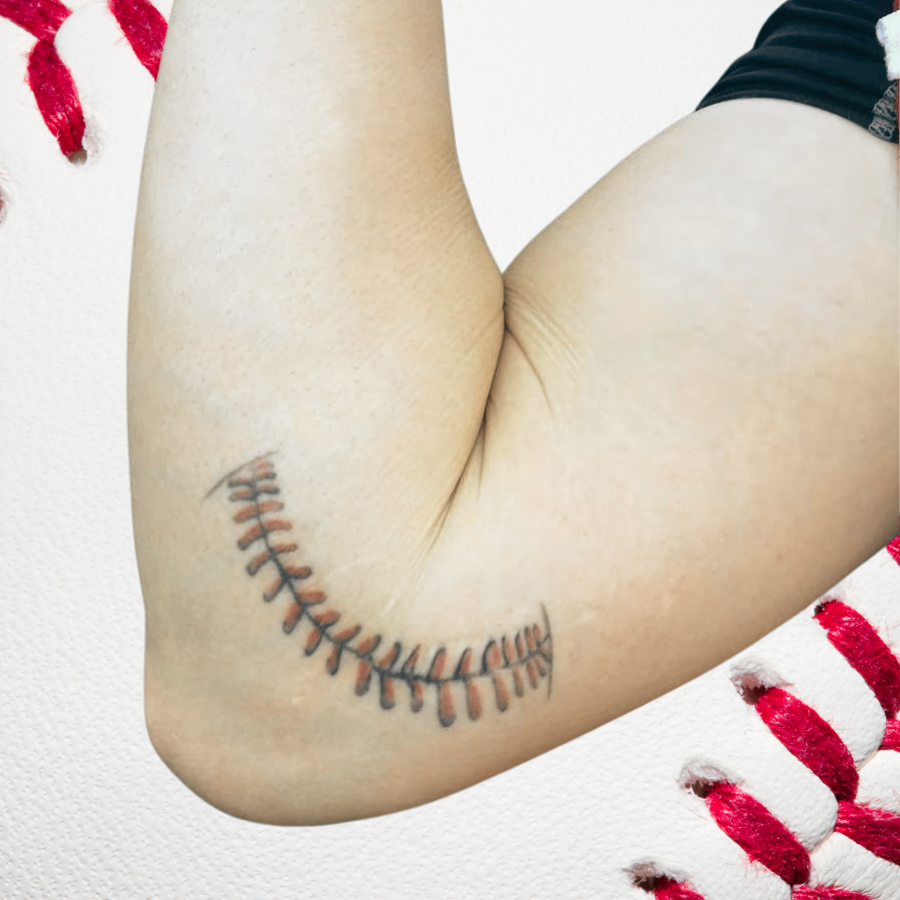Tommy John Injury (The Complete Guide)

Tommy John surgery, formally known as Ulnar Collateral Ligament (UCL) Reconstruction, is a common elbow injury among throwing athletes, particularly baseball players. In this complete guide, we will cover everything you need to know about the Tommy John injury, along with diagnosing, treating, and preventing Tommy John surgery.
Tommy John Injury
Tommy John Surgery involves replacing the damaged ulnar collateral ligament (UCL) in the elbow with a healthy tendon graft. The procedure requires a 12 to 18 month recovery process and is most commonly caused by overuse. Pain on the inside of the elbow is the most common symptom.
History of Tommy John Surgery
I think we can all agree that “Tommy John surgery” rolls off the tongue a bit easier than ulnar collateral ligament reconstructive surgery. But why is it actually called Tommy John?
Let’s roll back the clock to 1974.
Imagine you’re an MLB pitcher who puts bread on the table by throwing baseballs as hard as possible. But in the back of your mind, there’s a persistent worry–”what if this is the pitch my elbow pops?” After all, once your elbow blows out, your career is over.
That is, until Tommy John came along.
Thomas Edward John Jr. was one of the best pitchers of his generation by all measures. He was consistent, dependable, and healthy, throwing over 177 innings every year for 9 straight years. When Tommy John blew out his elbow in 1974, he wasn’t going to accept the status quo–he was determined to pitch in the Major Leagues again.
All he needed was a doctor who could perform a miracle.
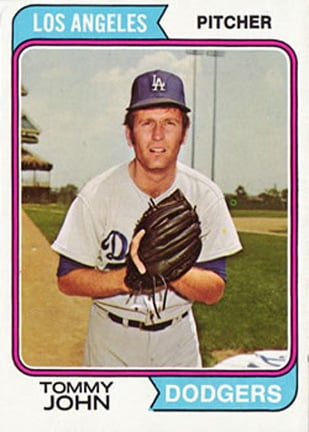
Dr. Frank Jobe, a baseball legend in his own right, had been toying with the idea of performing UCL reconstructive surgery for a couple years prior to Tommy John’s injury. Dr. Jobe had studied the repair of other ligaments throughout the body, and suspected the elbow ligaments could be repaired in similar fashion.
Tommy John agreed to be Dr. Jobe’s guinea pig, and following a successful surgery, the game of baseball would be changed forever.
Tommy John would go on to make a full recovery and pitch an astonishing 13 more years after undergoing the surgery.
As of January 2023, over 2200 professional baseball players have undergone Tommy John surgery, with tens of thousands more collegiate and high school players electing for the procedure. Tommy John surgery has also been performed on athletes of other sports, or folks in the general population who have torn their UCL.
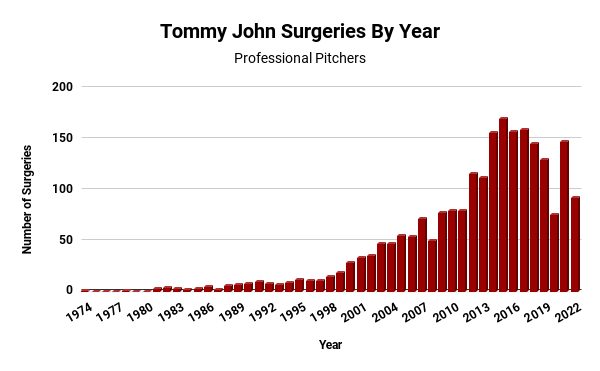
Tommy John Surgery Procedure
You may be wondering, what does the Tommy John procedure actually involve?
Although the success rate may lead you to believe it is a minor operation, there is actually quite a lot that goes into the surgery.
The ulnar collateral ligament (UCL) is a connective tissue that connects the humerus (upper arm bone) to the ulna (lower arm bone). When the UCL is fully or partially torn, the elbow does not have the ability to withstand significant amounts of valgus stress, causing pain and instability in the medial (inside) elbow.
Tommy John surgery involves the process of replacing the torn ligament with a new, healthy, connective tissue.
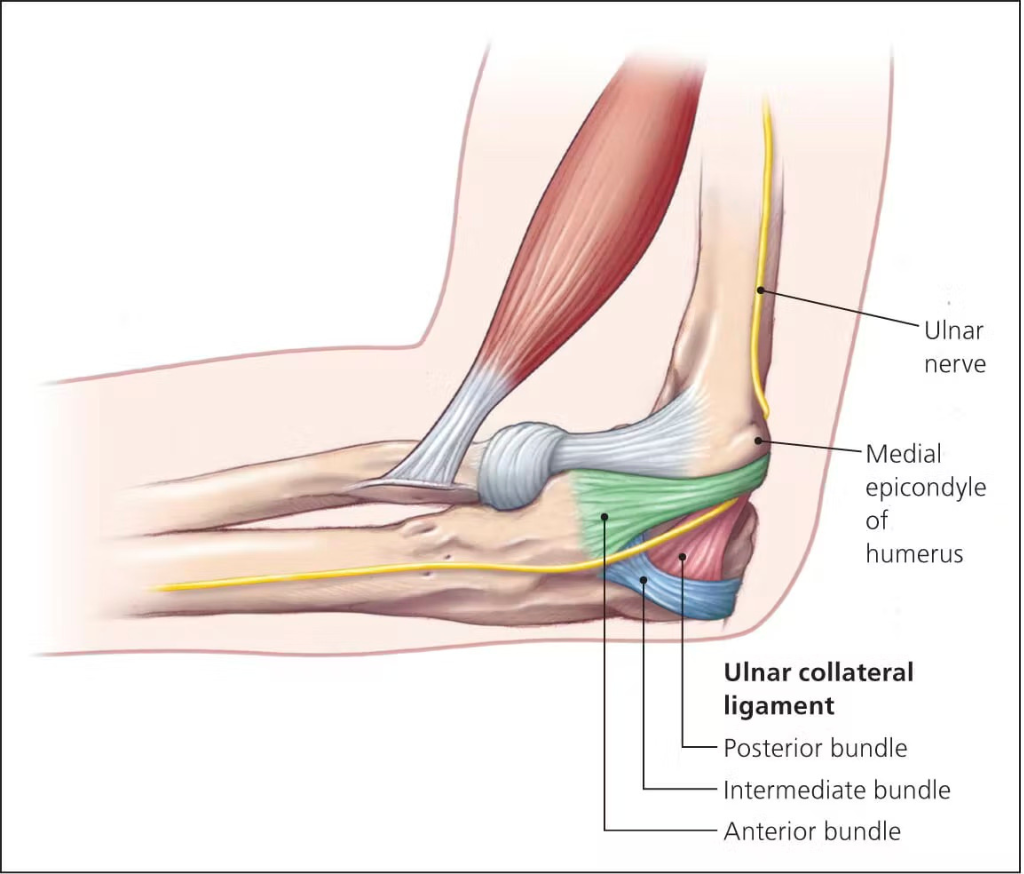
The surgery itself is a 3 step process:
- Harvesting the graft – the graft is the tendon that will be used to replace the UCL. The graft can be taken from somewhere in your own body, or from a donor. Note that using a graft from a donor has much higher failure rates and should be avoided. The most common graft locations are the palmaris longus tendon from the forearm, the gracilis tendon from the hamstring, and the big toe extensor tendon.
- Cleaning out the joint – The surgeon makes a 3-4 inch long incision on the inside of your elbow, allowing access to the UCL. Each patient is different, but often, the old ligament will be removed and the area cleaned out completely. In other instances, the surgeon might use the remnants of the ligament to add reinforcement to the new structure.
- Securing the graft inside the elbow – In order to anchor down the graft, the surgeon drills holes in both the humerus and ulna. He then threads the graft through these holes, weaving it several times like a figure-eight. Finally, the graft is secured with sutures, buttons, or screws.
In addition to this 3 step process of the UCL reconstruction, there are a few other procedures that are commonly performed at this time, but depend entirely on individual circumstances.
- Bone spur removal – Many pitchers will have bone chips and/or spurs floating around in the elbow region. While these boney bodies don’t always require removal on their own, most surgeons will opt to clean them out while they are already working in the elbow.
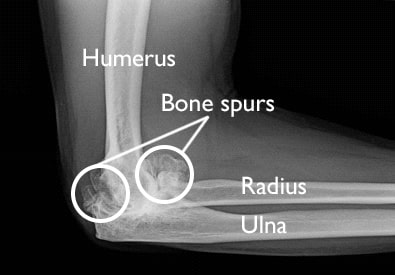
- Ulnar nerve transposition – The ulnar nerve naturally resides on the back side of the elbow, but often, surgeons will move the nerve to the front of the elbow in order to avoid it being stretched or irritated. Not all patients will require this, and it’s typically based on the doctor’s discretion. A nerve that is stretched, inflamed, or compressed can significantly delay the rehab process.
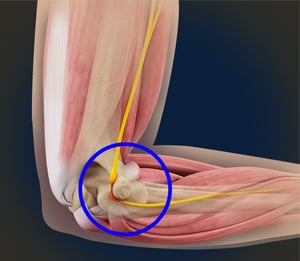
The surgery typically takes anywhere from 60 to 90 minutes, and patients are able to leave the hospital within a few hours of completing the procedure.
Going under for surgery is always a bit nerve wracking, but no need to worry, Tommy John surgery has a very low chance of general health complications. In rare cases, complications include infection, nerve damage, and blood clots.
The higher risk lies in rushing the rehab process and suffering another injury to the UCL, or simply not returning to full strength and being able to return to pre-injury level of competition.
Causes of Tommy John Injury
The million dollar question, of course, is what actually causes a UCL to tear, and how do we prevent it?
Unfortunately, there is no definitive answer to that question.
Here’s what we know can contribute to causing a UCL to tear
- Blunt force trauma
- Overuse
- Improper throwing mechanics
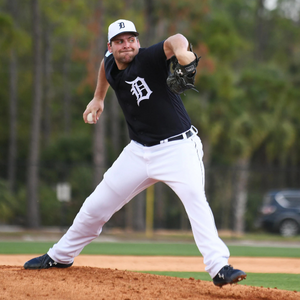
There are instances of blunt force trauma in which someone can injure their UCL. Events such as a fall, being hit, or suffering impact to the elbow can cause the UCL to tear.
For example, in 2017, New York Yankees infielder Gleybor Torres tore the UCL in his non throwing arm during a slide into home plate.
This type of injury to the UCL has also been known to occur to gymnasts, as a consequence of blunt force to the elbow during a fall. These scenarios are far less common than repetitive use injuries to the UCL, but they do happen.

So what causes all the Tommy John surgeries in pitchers?
It’s simple really…
Overuse. To be more specific, improper workload management.
Throwing a baseball inherently puts a ton of stress on the elbow. Studies have shown that an increase in arm speed is associated with increased elbow torque, and naturally, an increase in average throwing velocity is associated with an increased likelihood of Tommy John surgery.
Obviously, this is a catch 22, as we know higher pitching velocity is associated with pitching at higher levels of competition and improved performance.
How do we approach this dilemma?
Let me introduce you to a metric that all baseball pitchers and coaches should be aware of – Acute to Chronic Workload Ratio (AC ratio).
Workload, in the context of pitching, refers to the total amount of stress on the pitcher’s arm. Workload is influenced by both number of throws (volume) and speed of each throw (intensity).
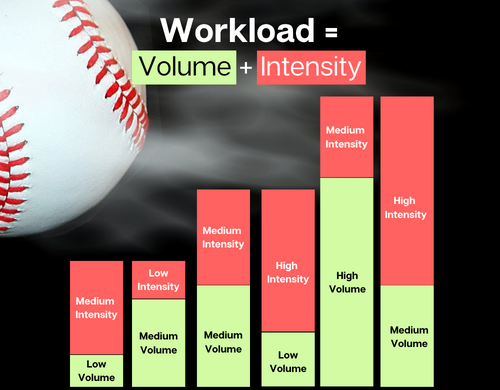
Throwing 50 low effort throws could theoretically result in the same workload as 5 max effort throws!
AC ratio measures average 1 day workload during a short time period (9 days) compared to workload over a longer time period (28 days).
An AC ratio of 1.0 means that short term workload is exactly in line with long term workload. AC ratio above 1.0 means short term workload is increasing, and below 1.0 means workload is decreasing.
Now we are getting to the heart of what we believe is the true cause of Tommy John surgery! Pitchers must build up their workload at a reasonable pace, and AC ratio allows us to measure that pace.
Why does this matter?
Let me give you an example.
Pitcher A throws 20 pitches in week 1, and adds 10 pitches per week until he ultimately reaches 80 pitches (his desired pitch count). Pitcher B throws 20 pitches in week 1, but then jumps directly to 80 pitches in week 2. Pitcher A would likely maintain an AC ratio around 1.3, indicating he is building up slow and steady. Pitcher B would have an AC ratio that is off the charts!
In short, pitchers should avoid throwing too much too soon.

What about different pitch types?
Contrary to conventional wisdom, studies have shown that fastballs, sliders, and curveballs all exhibit similar amounts of force on the elbow.
This goes against the commonly held belief that young pitchers should avoid throwing breaking balls for the sake of protecting their arm. We still believe that youngsters should steer clear of throwing breaking balls, but for the sake of their pitching development rather than injury prevention.
It’s worth noting here that all of these contributing factors and forces are highly unique to each individual pitcher!
A study may show that on average, something may increase the likelihood of having TJ surgery, but that doesn’t mean that every pitcher who falls into that category will end up needing the surgery. Countless factors are at play for each individual when it comes to their personal chances of needing the surgery.
What about pitching mechanics?
The timing and sequencing of how a pitcher throws a pitch plays a huge role in the stress that is applied on the elbow. No two pitchers move exactly alike, but studies have shown that there are a few common biomechanical variables that are associated with decreased valgus torque on the elbow.
- Max shoulder external rotation – More shoulder ER is associated with lower elbow torque.
- Higher elbow flexion – Having a more flexed (bent) elbow at ball release produces lower elbow torque.
- Late trunk rotation – Delaying trunk rotation until after front foot contact produces significantly lower torque.
- Submarine pitching – A submarine throwing motion produces much higher elbow torque than a conventional overhead motion.
As you can see, mechanical efficiency plays a significant role in the amount of stress that is put on the elbow during the throw. Developing proper mechanics should be of the highest priority for all pitchers, but especially youth and high school level pitchers.
“Mechanical efficiency?”, you might ask, “I thought mechanics were either good or bad.”
There is no one “right” way to throw a baseball, but there is one efficient way for each individual to throw based on what their body can physically do.
Striving for mechanical efficiency means finding the patterns that allow a pitcher to throw at the highest possible velocity with the least amount of possible arm stress.
Developing efficient mechanics early on will mean each throw has a lower “cost” to the pitchers long term arm health. If pitching deeper into games, recovering quicker, and staying healthy is what you’re aiming for, you need to train mechanical efficiency.
We recommend finding a pitching coach with a proven track record of helping pitchers develop proper mechanics. If you want to take it to the next level, find a way to get a motion capture analysis of your mechanics and attain data on exactly what parts of your mechanics you need to improve!
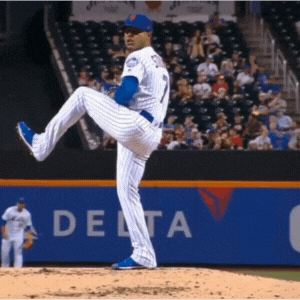
Symptoms of Tommy John Injury
A torn UCL presents differently for different athletes.
Some athletes feel a sudden “pop” on one specific pitch, whereas others experience a gradual increase in elbow soreness over the course of weeks or months. However, there are some common symptoms that dictate a visit to the doctor.
- A sudden “pop” in the elbow when throwing a pitch
- Unusual pain or soreness on the inside of the elbow
- Swelling, bruising, or tender to the touch
- Pain when straightening or bending the elbow
- Significant weakness in the forearm, elbow, or bicep
- Pain when gripping, squeezing, or performing a “doorknob” turning motion
- Numbness or tingling in the elbow, forearm, or hand
- Unusually slow pitching velocity
- Significant loss of pitching command
- Pain with throwing certain pitch types
Don’t panic! Just because an athlete is experiencing symptoms does not mean they will need Tommy John surgery. There are many other elbow injuries that could be present, with many being far less severe than a torn UCL.
The most important thing is this – If an athlete is experiencing any of these symptoms, stop throwing immediately!
It is better to miss a game or two and find out what’s going on, than to pitch through pain and turn a minor injury into a major one.
.png?width=500&height=500&name=pitcher%20throwing%20image%20(1).png)
Tommy John Diagnosis
Getting an accurate and timely diagnosis for a Tommy John injury is paramount to a successful recovery.
Dr. Christopher Ahmad, the team doctor for the New York Yankees, diagnoses UCL injuries using a 2 step process:
- Physical Examination – Doctors will likely begin by examining a patient’s range of motion, and pain threshold when pressure is applied to the area. The hallmark test to assess for a ligament tear is called the moving valgus stress test. This test replicates stress to the inside of the elbow, and patients with a UCL tear will find it extremely painful.
- Imaging Studies – In order to verify a torn ligament (or diagnose a different elbow injury) imaging studies will be performed. These include X-rays, MRI, and ultrasound. Imaging is the only way to truly diagnose an elbow injury, and also gives the doctor sufficient information to recommend a best course of action.
Whether you are a little leaguer or an MLB pitcher, we believe that working with a doctor who specializes in elbow procedures is generally a great idea. It may require more work than visiting your local doctors office, but with an injury as impactful to a career as Tommy John surgery, you want to be in the best hands possible.
Dr. Ahmad also breaks down Tommy John surgery from a surgeon’s perspective.
Tommy John Injury Prevention
The bottom line about Tommy John surgery is that anyone who repetitively throws a baseball is going to be at risk of injury.
Unfortunately, there are no proven ways to completely prevent needing Tommy John surgery, besides ceasing to throw. However, there are a number of things an athlete can do to tip the scales in their favor and decrease the likelihood that they will eventually need Tommy John surgery.
- Improve pitching mechanics: As we stated earlier, key mechanical patterns are associated with increased or decreased elbow stress levels. Proper pitching mechanics are all about transferring energy from one body part to the next – this is what we refer to as mechanical efficiency. By using the entire body and transferring force efficiently, the arm will not absorb the brunt of the stress, but instead it will be spread out throughout the entire body.
- Workload management: As described above, poor workload management is perhaps the #1 cause of Tommy John surgery. Athletes should make sure they perform a proper throwing program to build up to the demands of pitching in games. Players should also work with their coaches and get on the same page to make sure the coach is not asking them to pitch more than what they’re sufficiently prepared for.
- Arm care exercises: Strengthening the shoulder, upper back, forearm, and other muscles that are involved in pitching is a great way of “bulletproofing” your arm. Having strong muscles and tendons will give an athlete a better chance of holding up to the high forces that are involved with pitching.
- Strength and conditioning: Just like with arm care exercises, being strong and well conditioned will help an athlete stand up to the rigors of pitching. This becomes especially important as pitchers work deep into games. When fatigue sets in, the tendency is for mechanics to break down and a pitcher will become more susceptible to injury.
- Nutrition, hydration, and sleep: Proper recovery is one of the most overlooked, yet most important aspects of success for any athlete. Pitchers are no exception, as these recovery factors could be the difference between staying healthy or suffering an injury due to fatigue. Many young athletes think that progress happens when they are training, but in reality, progress happens during recovery. If you take care of your body, it will take care of you!
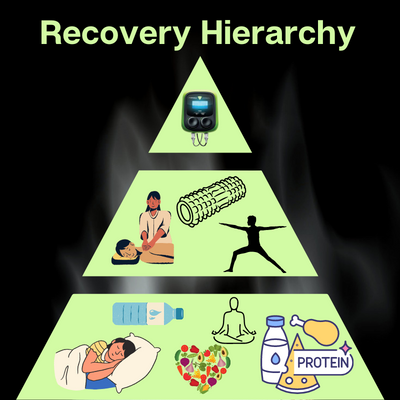
Alternatives to Tommy John Surgery
Significant progress has been made with alternatives to Tommy John surgery over recent years.
Hearing the diagnosis “torn UCL” is no longer an immediate ticket to the operating room. Furthermore, even if an athlete does need surgical treatment, they may be a candidate for a new alternative surgery called UCL repair with an internal brace.
Internal brace surgery, as it is commonly referred to, is an option available to athletes who’ve suffered a very specific type of tear to the ligament. Athletes who have a partial, acute tear to a specific part of the ligament, may be candidates.
In this procedure, the partially torn ligament is repaired with suturing techniques, and then wrapped with a collagen based tape that acts as an internal brace. In short, the athlete retains their original ligament, having it repaired instead of replaced.
The best part?
Recovery time is cut in half!
According to a study done by a group of doctors, 92% of athletes undergoing this treatment were able to return to their same or higher level of competition at an average of only 6.7 months post surgery. This surgical technique represents a huge advancement in orthopedic medicine, and is already revolutionizing the treatment of a torn UCL.

In addition to the internal brace surgery, there are also non surgical treatment options that are viable for minor UCL injuries.
In many cases, a UCL injury isn’t a black and white diagnosis. Almost every throwing athlete has some degree of damage to their UCL.
The ligament becomes worn down, frayed, and lax over time, like an old rubber band that has lost its strength. If left untreated, this routine wear is what can eventually turn into a partial or full tear.
If elbow pain begins to present before the UCL is actually torn, the athlete could be a candidate for these non-surgical procedures.
- Platelet Rich Plasma (PRP) Therapy – This procedure involves using the patient’s own blood in order to promote healing and tissue regeneration. Blood is drawn, and then spun around in a centrifuge to separate the blood into its component parts. The “nutrient dense” platelet rich plasma is then collected, and injected into the site of injury. Think of it as flooding the injury site with the body’s own healing compounds. The research on the efficacy of PRP treatment is mixed. In our experience, this treatment may be appropriate for athletes dealing with minor UCL conditions, but is typically ineffective for treating torn ligaments.
- Prolotherapy – Considered an “alternative medicine” this treatment option is not currently widely available, as research is still being conducted on its efficacy and risks involved. Nevertheless, there are doctors who administer this treatment for UCL injuries. In short, prolotherapy involves injecting dextrose (a type of sugar) into the site of injury, which triggers an inflammatory response and kickstarts the body’s healing process. Similar to PRP therapy, this is likely only suitable for minor UCL injuries such as sprains or inflammation.
- Stem Cell Therapy – Like prolotherapy, stem cell therapy is still in the early days of development and regulation. Laws surrounding stem cell therapy differ depending on the country, but research is constantly being done on the safety and efficacy of this promising new treatment. Stem cell therapy involves injecting the site of injury with stem cells, which can then develop into any other type of cell in the body.
- Rest and Rehabilitation – Whether an athlete opts for any of the above treatment options, or foregoes an injection procedure, rest and rehab are the primary factors that will allow the UCL to properly heal. The goal of any of the injections mentioned above is to kickstart or supplement the body’s natural healing process. The healing process takes time, and following a logical and comprehensive rehab protocol will be the determining factor in an athlete’s ability to return to sport pain-free.

While there are several alternatives to Tommy John surgery, every athlete has a different diagnosis and different likelihood of success for each treatment option. The most important thing is to get a proper diagnosis from a doctor, and to review all available treatment options.
From our experience, we know that athletes typically want to avoid surgery at all costs. However, sometimes surgery is the only treatment that makes sense and avoiding it at first does nothing more than prolong the time it takes to return to sport.
Tommy John in Other Sports
Tommy John surgery is primarily associated with baseball players. However, it is also seen in athletes of other overhead throwing sports, as well as sports in which athletes may experience unpredictable falls, such as gymnastics.

Besides baseball, the most common sports in which Tommy John is seen are:
- Softball
- Tennis
- Javelin
- Football
- Water Polo
- Volleyball
- Racquetball
- Gymnastics
Any sport in which an athlete performs repetitive overhead throwing motions is going to introduce a risk of UCL injury.
Recovering From Tommy John Surgery
There’s no way around it, recovering from Tommy John surgery is a long and challenging process.
Returning to competition following any major surgery requires exceptional commitment, and this is especially true for Tommy John surgery. A successful recovery entails strict adherence to a treatment plan and being willing to adjust as needed.
No two pitchers will have exactly the same Tommy John rehab.
Treatment Plan
Developing a treatment plan with the doctor and a physical therapist is the starting point for ensuring a successful recovery. Each athlete’s recovery will be unique to them, and it is important for the athlete, doctor, and physical therapist to all be on the same page.
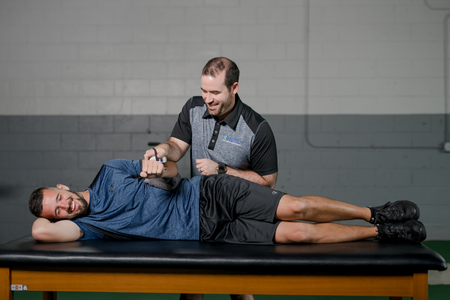
Here are a few variables that must be taken into account when developing a treatment plan:
- Severity of injury – Did the athlete have a full UCL reconstruction or an internal brace procedure? Were any other procedures done at the same time (bone spur removal, flexor tendon repair, nerve transposition, etc.)?
- Injury history – Does the athlete have a history of arm injuries?
- Age and competition level – Is the athlete a child or an experienced pitcher competing at high levels? Does the athlete throw 60 mph or 100 mph?
- Post recovery goals – Does the athlete want to return to competition or simply be able to perform routine functions with their arm?
- Individual anatomy – Is the athlete hyper mobile or very tight? Are there other anatomical factors that make the athlete unique?
- Mechanical inefficiencies – Does the athlete need to change their mechanics in order to decrease stress on the elbow?
- Available time to commit to treatment – How much time everyday is the athlete willing to spend performing their rehab protocol?
Each of these factors will come into play in determining what the individual treatment plan looks like.
Some plans may be more conservative, others more aggressive. Developing and following an appropriate treatment plan is going to play a large role in determining an athlete’s ability to achieve their post surgery goals.
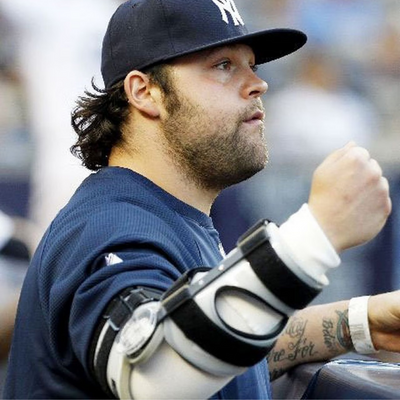
Recovery Timeline
Once a treatment plan is developed, the recovery timeline will begin to take shape.
The average Tommy John rehab timeline is 12-18 months, and the amount of time an athlete takes will depend on their specific treatment plan as well as any setbacks they have during the rehab.
Naturally, we find that most athletes want to have the quickest recovery possible. We believe this is a big mistake, and puts the athlete at risk of suffering setbacks during their recovery, or having an unsuccessful recovery altogether.
Prioritize a successful recovery over a fast recovery!
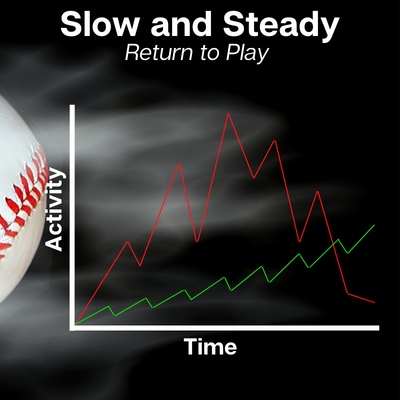
There are 4 phases to a Tommy John surgery rehabilitation:
- Immediate Post-Operative Phase (Weeks 0-3): Protect the healing graft; decrease pain and inflammation; slow down muscle atrophy.
- Intermediate Phase (Weeks 4-7): Gradually increase elbow back to full range of motion; regain and improve muscular strength; restore full function of graft site.
- Advanced Strengthening Phase (Weeks 8-14): Increase strength, power, and endurance; maintain full range of motion; gradually begin sport specific activities.
- Return to Activity Phase (Weeks 15-52): Continue to increase strength, power, and endurance of upper extremities; progress return to sport activities until fully ready to return to sport.
These are the 4 overarching phases of recovery, however, there are many progressions and goals that must be met within each phase. The timelines given above are very fluid and are not hard rules.
Let’s break down each phase a bit more.
The moment you leave the hospital, your healing process begins. The first 3 or 4 weeks immediately following surgery are all about protecting the elbow and laying the groundwork for the next phase of rehab.
The athlete will be required to wear a brace at all times except when working with a physical therapist–this ensures the elbow is protected and prevents the athlete from trying to push their limits.
Physical therapy during this time will include soft tissue mobilization in order to help manage swelling and pain, as well as very light forearm exercises and range of motion work. The primary goal of these exercises is to minimize atrophy (weakening of the muscles that the athlete is now suddenly unable to use).
Although the athlete is unable to do much that involves the use of the elbow, they can absolutely train other body parts. This is a great time to begin shoulder exercises, core work, and safe lower body movements.
The sooner you can start making progress in overall athletic development, the higher the likelihood you return as a better pitcher than before surgery.
About a month after surgery, the athlete will be safe to start doing more things without wearing a brace, and focus on restoring full range of motion to the elbow.
Restoring full range of motion as early as is safely possible is important for success later in the recovery. The physical therapist will use massage techniques, stretching, and mobilization techniques in order to help the athlete restore full range of motion.
Be warned–this is often the most painful part of the entire Tommy John rehab for many athletes!
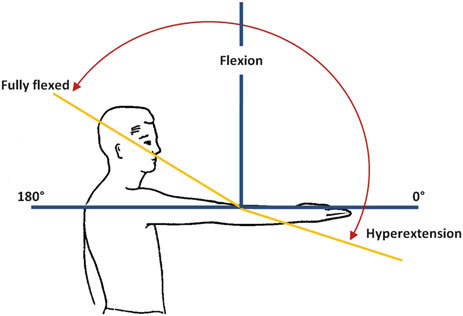
Strengthening exercises will progress towards aiming to improve strength rather than simply avoid atrophy. Exercise selection may remain the same, with an increase in resistance challenging the athlete a bit more.
Around 2 months post surgery, enough healing has taken place for the athlete to safely begin performing more dynamic movements.
These will be exercises like med ball tosses, manual resistance movements, side to side throws, and 2 handed overhead throws. The athlete can also begin returning to normal upper body strengthening movements like rowing, pressing, pulling, etc.
These types of movements will prepare the athlete to eventually return to throwing. The focus here becomes developing power, strength, and endurance, as well as giving the athlete confidence that the graft is healing and that they will safely be able to begin throwing soon.
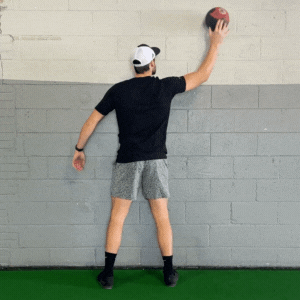
If all has gone smoothly, the athlete will be ready to begin throwing around 4 months post-op.
This is one of the most significant milestones in the Tommy John rehab timeline, and also begins the most important part of the entire rehab process.
For a comprehensive checklist of exactly when a player can be ready to return to throwing after Tommy John surgery, download our free Tommy John Scorecard.
The return to throwing program is the “make or break” factor for most athletes recovering from Tommy John. If done well, the pitcher is set up for success and has an opportunity to return as a better pitcher than before. If done poorly, the pitcher may suffer setbacks, or worse, re-tear the UCL.
We handle return to throwing programs using a criteria based progression. An athlete must meet certain criteria every step along the way, in order to prove that they are ready for the next step in the progression.
Modern technology allows us to measure just about everything. Our criteria for a return to throwing program is based on measurable, objective metrics, which prove that the athlete is ready to progress.
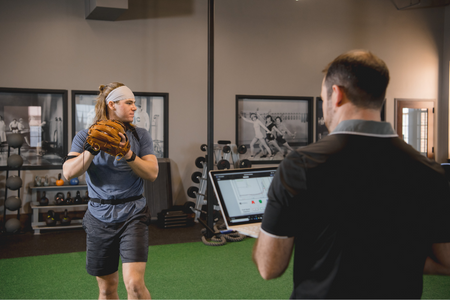
An athlete simply saying they “feel” good is not enough. The numbers need to back that up.
Some of the measurement tools we use include the Pulse sensor, dynamometers, force plates, radar guns, recovery tracking technology, and more.
Besides allowing for objective tracking of an athlete’s progress, using quantifiable criteria has another major advantage for athletes going through the rehab process–goals.
Athletes are competitive by nature, and after suffering a major injury, that competitive outlet can get taken away.
By giving the athlete goals and targets to strive for within the rehab process, it allows them an opportunity to channel their competitiveness, which can have huge benefits on the mental side of dealing with an injury.
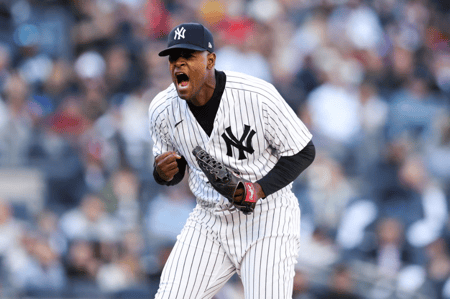
Our return to play philosophy is to let the data determine the timeline. Every progression is unique, and should be dictated by the athlete’s ability to objectively demonstrate that they are ready for the next step in the progression.
We find that this method leads to a much higher success rate, as well as helping our athletes treat rehab with the same intensity that they treat a game.
The return to throwing program can be broken up into several smaller phases (flat ground throwing program, mound throwing program, in game rehab throwing). We like to see the throwing program in its entirety, our goal is to safely take the athlete from day 1 of throwing to pitching in games at the same level they were at before surgery.
The most important thing with a return to throwing program is a smooth progression!

No matter what part of the throwing program an athlete is in, they should never have a big increase in workload from one week to the next. Every week, the athlete should aim to increase either the volume or the intensity, ever so slightly. This will ensure the body fully recovers and is able to adapt to the stresses that throwing creates.
Tommy John recovery can be a long and complex process.
There are many nuances that must be considered both at the start and throughout the journey. Working with a trusted physical therapist can make this process much easier on the athlete, as it removes the guesswork on the athlete’s end.
Tommy John Exercises
Exercise selection plays a big role in the success and speed of Tommy John recovery.
Exercises are what creates a stimulus for a healing response, and ultimately strengthens the arm enough to allow the athlete to effectively throw again.
Listing every exercise that should be used during the recovery process is beyond the scope of this article, but we prefer to think in terms of the muscles that we are aiming to train.
Each of these muscles will then have an entire progression of exercises that can be implemented in order to strengthen them and continue challenging them as the athlete progresses.
Here are the muscles and movements that are most important to strengthen during Tommy John rehab:
- Forearm: Controls movements of the wrist, hand, and fingers. Also connects to the elbow and absorbs force during the throw.
- Movements: Flexion, extension, pronation, supination, grip
- Tricep: Controls and stabilizes elbow flexion and extension.
- Movements: Flexion, extension
- Bicep: Controls and stabilizes elbow flexion and extension.
- Movements: Flexion, extension
- Rotator Cuff (Shoulder): A group of 4 muscles around the shoulder–they work to stabilize the shoulder joint during different types of movement.
- Movements: External rotation, internal rotation, abduction, adduction, flexion, extension, circumduction
- Scapula: Many muscles attach to the scapula and work together to promote proper function of the scapula, which works along with the rotator cuff to stabilize and control the shoulder.
- Movements: Retraction, protraction, elevation, depression, upward rotation, downward rotation
- Pec Muscles: These are muscles of the chest that play a role in stabilizing the shoulder and accelerating the arm during the throw.
- Movements: Adduction, forward rotation
- Core: The muscles of the midsection, both front and back, are important for stabilizing the body during the throw, and properly transferring energy through the body.
- Movements: Rotation, anti rotation, flexion, extension, anti extension, lateral bending, pelvic tilt
- Lower Body: Proper strength and control of the hips and legs provides a strong base for a pitcher to throw off. There is also a correlation between poor single leg squat control and increased risk of arm injury in younger players.
- Movements: Squat, hinge, split stance, lateral lunge, single leg control, hip control
These are the most important muscle groups that directly affect the elbow during the throw.
But don’t stop there!
The lengthy Tommy John rehab process presents an opportunity to strengthen the entire body. Athletes who want to come back stronger after Tommy John should use this time to improve areas of weakness in their body, and become more explosive and dynamic athletes in general.
Within each of these body parts, there are different types of exercises that can be utilized to create a different training stimulus. The different exercise types are:
- Concentric – Concentric exercises are when the muscle shortens as it is contracted. This is the standard movement in which someone pushes or pulls some sort of resistance, and the weight moves in the direction that force is being applied. The benefits of concentric movements are building muscle mass, max strength, and power.
- Eccentric – This type of movement occurs when the muscle lengthens as it contracts. Eccentric exercises are performed by attempting to slow down or control the movement of weight in a given direction. For example, slowly lowering a barbell to your chest during a bench press. The benefits of eccentric exercises are improving endurance and strength through a full range of motion.
- Isometric – Isometric exercises occur when a muscle contracts but doesn’t change length. To perform this, an athlete would essentially be trying to move an immovable object. The benefits of isometric exercises are developing max power, increasing muscle recruitment, and improving endurance.
When it comes to Tommy John rehab exercises, an athlete should perform each of these different types of exercises for each different muscle group over the course of their rehab.
This may seem a bit overwhelming, but a good physical therapist will prescribe exercises that include each of these types of exercises at the right time in the athlete’s progression.
How to Have a Successful Recovery
There are many factors that contribute to an athlete having a successful Tommy John recovery. While some of these factors are out of the control of the athlete, many of them are within their control.
- Doctor of choice – Finding a doctor who specializes in elbow procedures is extremely important to a successful recovery, especially for more experienced athletes. Each doctor has their own preferred techniques and style of how they perform the surgery, so finding a doctor with a track record of success gives you the best chance for a good recovery.
- Following the treatment plan – Ignoring the recommendations of the doctor or physical therapist is a recipe for disaster. Even though the athlete may “feel” like they are ready to do something, it doesn’t mean the ligament is ready.
- Erring on the side of caution – During the rehab process, it helps to think of every exercise and progression in terms of risk to reward. If an exercise is going to increase the risk of re-injury just to potentially return to games a few weeks earlier, it is probably not a wise choice. When in doubt, always be conservative and err on the side of caution.
- Use technology to your advantage – There are many technological tools available that can assist in having a successful recovery. These tools can be used to measure arm stress, strength in different body parts, recovery, and much more. A good physical therapist should help guide the athlete in using the best technology possible.
- Prioritize recovery – The exercises you perform during the rehab are the stimulus, the recovery actually happens at home. A few keys to ensuring good recovery are eating a healthy diet, drinking enough water, and getting enough sleep.
- Listening to your body – If something doesn’t feel quite right, there is no need to push through it. Like we’ve mentioned before, erring on the side of caution is always best.
- Embracing adversity – Almost every athlete will go through some sort of unexpected challenge during their recovery. The recovery process is rarely smooth from start to finish. Accepting this fact and being ready to face challenges head on will give the athlete a better chance of coming out successfully.
- Improve the entire body – Having a year or more away from competition gives the athlete a long time to work on addressing weaknesses within their body. Athletes who use this time wisely are the ones who are able to come out of Tommy John as a better pitcher than before. Figure out what you need to improve, and get to work!
- Address mechanical inefficiencies – Poor mechanics aren’t always the reason for Tommy John, but they definitely don’t help. An athlete should work with a pitching coach during their rehab in order to improve their mechanics and learn how to better use their entire body to throw the baseball.
An athlete who is serious about having a successful recovery from Tommy John surgery should do everything in their power to give themselves the best odds.
Having a good support system and rehab team is a great way to ensure that the athlete is remaining focused on having a successful recovery.
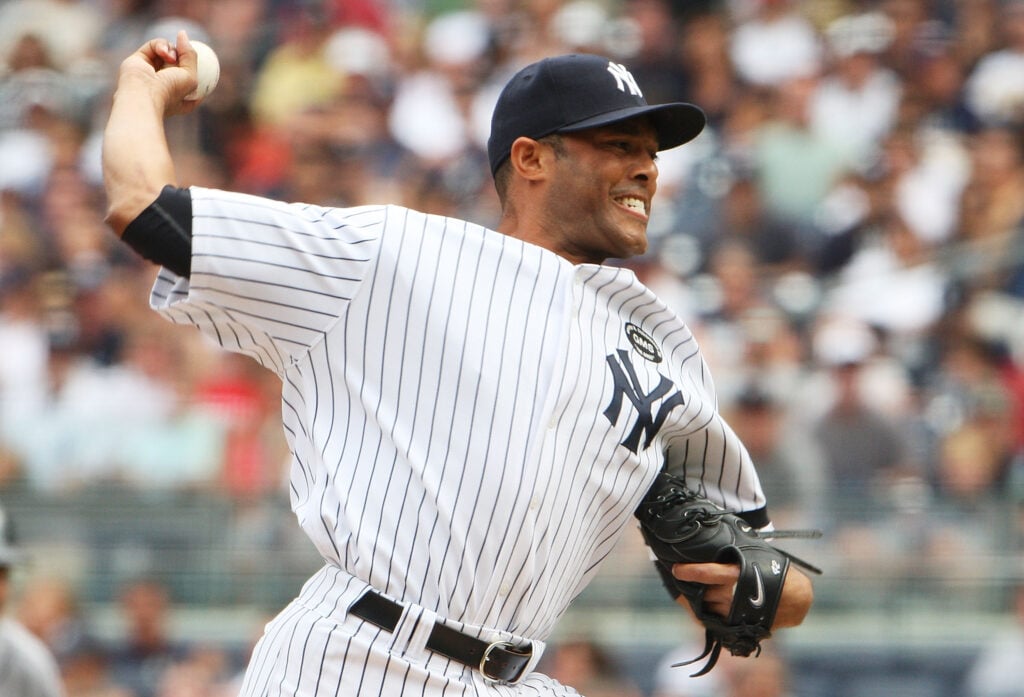
Conclusion
The development of Tommy John surgery in 1974 is a medical achievement that has given thousands of players a second chance to play the game they love.
Tommy John surgery is a highly successful procedure in which the torn ulnar collateral ligament is replaced with a graft, and will typically have athletes competing again within 12-18 months after surgery. There are a few alternative options to Tommy John surgery, but are typically only viable options for athletes with minor injuries to the UCL.
The most common symptom of Tommy John surgery is pain in the inside of the elbow, especially when performing a throwing motion.
Pointing to an exact cause of Tommy John surgery is impossible, but the most common contributing factors are overuse and improper throwing mechanics. Athletes who pitch too much without allowing their body time to acclimate to the stresses of throwing are at a higher risk of suffering a torn UCL.
Recovering from Tommy John surgery is a long and challenging process, but with the help of a physical therapist and a good treatment plan, the athlete has a good chance of a successful recovery. The athlete should make sure they are strengthening and training every muscle that is involved in throwing, and progressing at a conservative pace.
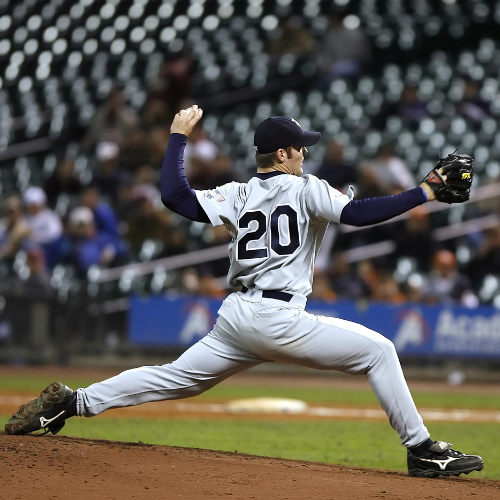
If you found this article helpful, we would greatly appreciate you sharing with others who may benefit from this information.
Kinetic Sports Medicine and Performance is a physical therapy clinic located in Delafield, Wisconsin, and we specialize in treating athletes. Follow us on social media to learn more about what we do and how we look at sports related injuries. If you’re having elbow pain, rehabbing your own Tommy John injury now, or have any questions you’d like addressed by a physical therapist who specializes in Tommy John rehab, contact us today.
